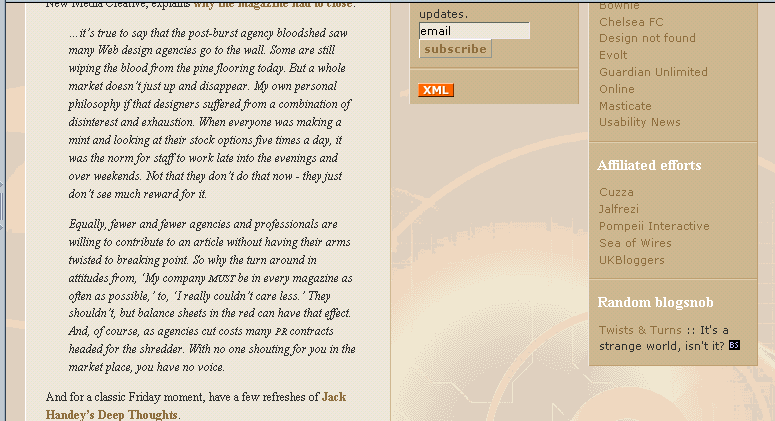
The following shows two transitions:
The first (my page) uses what might be called a fluid approach, where I've had text flow into space vacated by the short column. (This might lead to a main column that's wider than optimal ... for future development.)

The second shows a "no flow" transition; I could live with this, but the second PNG in this series shows the arbitrarily narrow column that has caught my attention:

#2

Series 1 ... commercial sites











Series 2 ... daily reads (in no particular order)








Series 3 ... other reads










Series 4 ... 10 quasi random blogs










I feel comfortable making the following assertion: However we might handle the boundary where a column ends, and whether the layout is 2 column or three, and whether the main text column is center, right, or left, and whatever combination of width and font is settled on as near optimal, there is nary a single "credible" blog where it is choked (what I'd call "absurdly and arbitrarily narrow", constrained by the other column/s width/s). And that was what I was seeking to substantiate.
In Chapter 8 The Tao of Complete Resolution, Dr. Chang writes that there are five basis for decision making: law, custom, intuition, inference, and rational confirmation. I'll let you judge which I've fulfilled here; it's emminently obvious from the works illustrated above that trust is justified.
regards
Bernard D. Tremblay
aka hfx_ben / WillowBear / Karma Chöpal